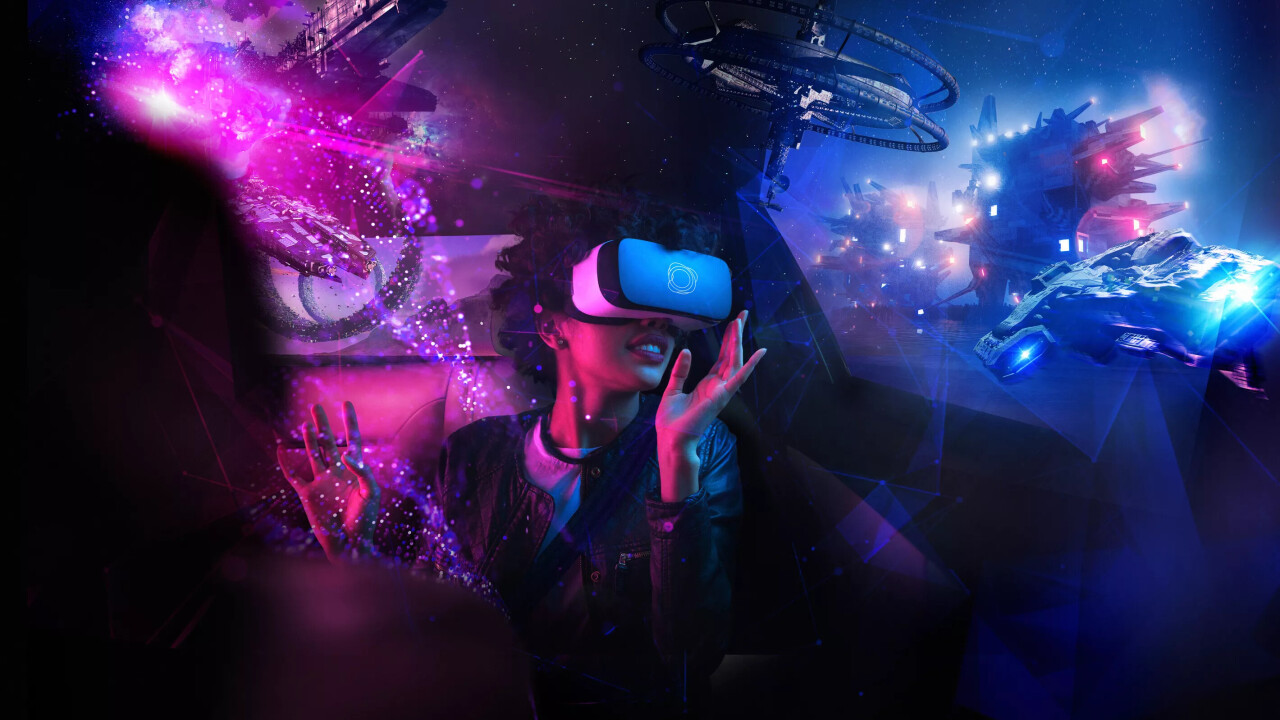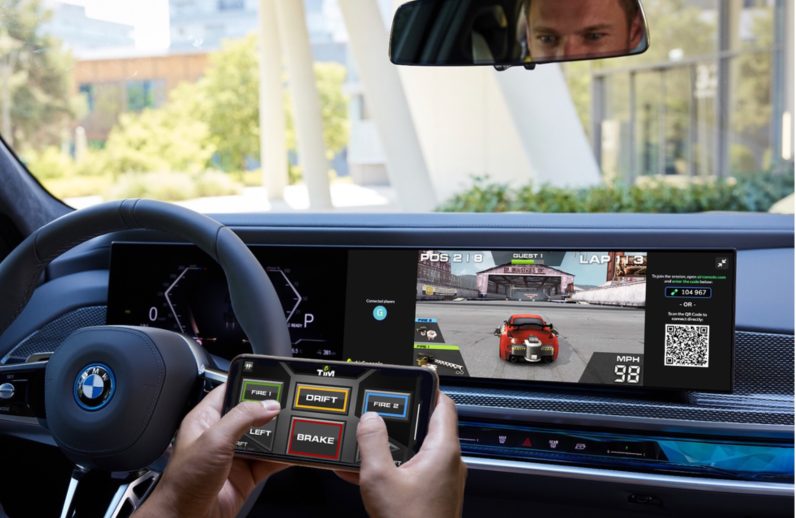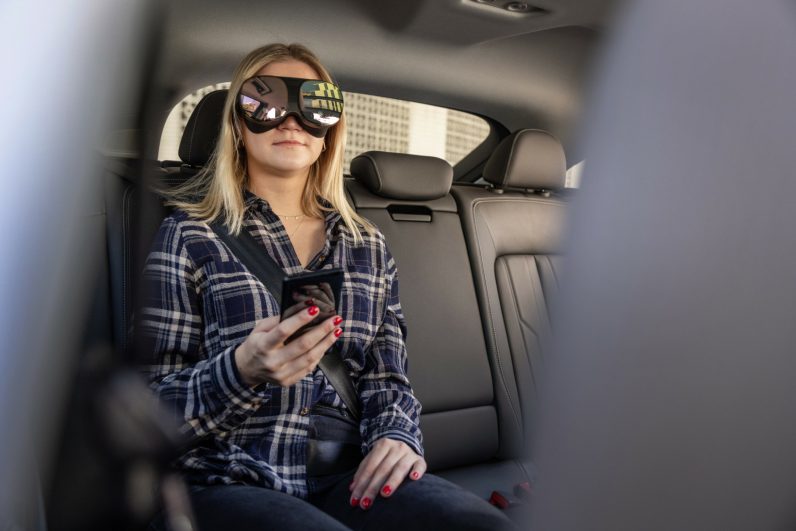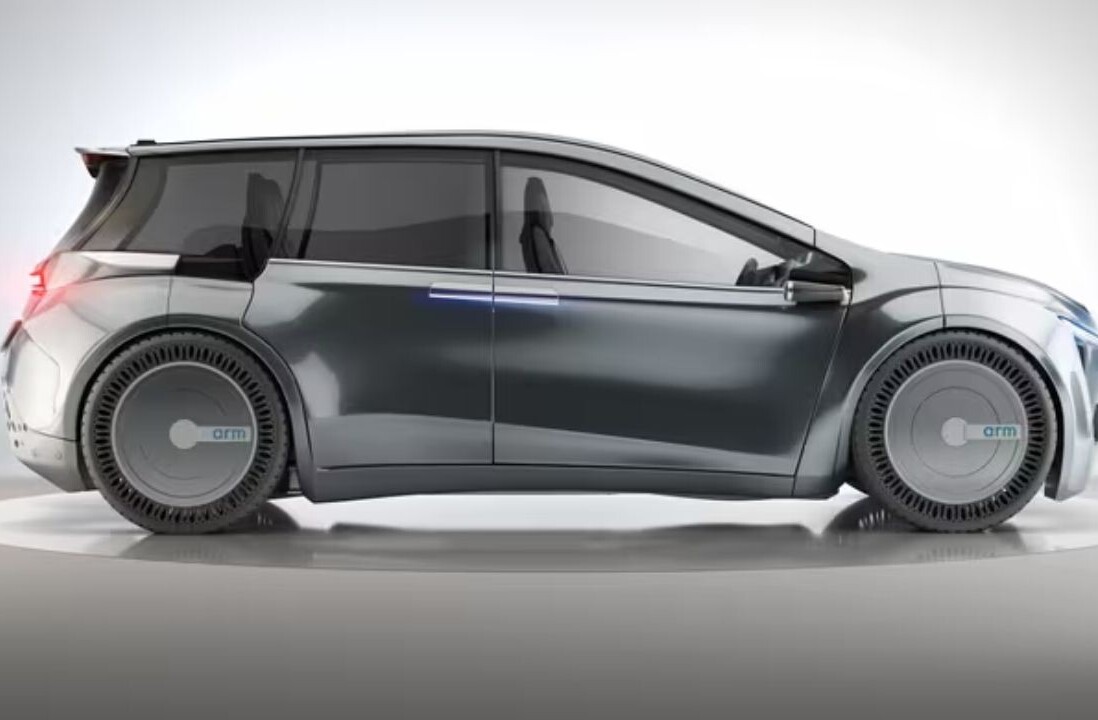
Every new car release means another competitor for brands — and the industry seems to be pumping out new vehicles every day. Companies are chasing every avenue to attract customers in this competitive market. And the latest? Well, that’d be gaming.
Besides, of course, a vehicle’s visual appeal and the joy of being in the driver’s seat, designers are focusing their attention on our overall in-car experience. This is especially the case with EVs and their time-zapping charging. Sitting in the car gets boring, and carmakers want to entertain us.
One company entering this space is N-Dream, the Swiss startup behind the AirConsole game platform. N-Dream was inspired to create an in-car gaming experience after CEO Anthony Cliquot saw “people playing games on their phone despite a big screen in front of them” while charging their EVs.

Recently, the company announced a partnership with BMW to bring AirConsole and thousands of games to the company’s car dashboard screens. The games are downloaded instantly over the air — and you can use your smartphone as a controller.
BMW is not the only company investing in in-car entertainment. Tesla led the pack with its initial launch of gaming options and sing-along karaoke in 2019. You can play using the steering wheel, touching the screen, or using your own controller. Tesla even started selling microphones earlier this year in China to help you properly belt out those power ballads.
Tesla owners could initially play games in the front passenger seat while the car was in motion. But the OEM removed the capability in December 2021 after the National Highway Traffic Safety Administration (NHTSA) investigation raised concerns about driver distraction, as well as a potential breach of The Vehicle Safety Act.
This legislation prohibits manufacturers from selling vehicles with defects posing unreasonable risks to safety, including technologies that distract drivers from driving safely. It’s a teachable moment for other vendors. And let’s face it, even backseat gamers can be distracting.
Despite these legal issues, the rise of this sort of in-car entertainment is only starting — and gaming is going to be at its forefront.
Autonomous vehicles are coming
In the near future (although how near, no one knows), none of us will be driving our own vehicles — it’ll be robots and algorithms doing that for us. Car makers are already preparing for this, knowing we’ll be spending hours in autonomous vehicles, hungry for stuff to do.
In Germany, Mercedes-Benz is already preparing and testing this thesis. The company was granted system approval for Level 3 conditional autonomous driving under UN-R157 on 13,191 kilometres of motorway approved for conditionally automated driving in December by the German Federal Motor Transport Authority (KBA). This allows the company to roll out its self-driving tech, and also refine its in-car entertainment.
It asserts, “this ultimate luxury experience enables customers to win back precious time when in the car through relaxation or productivity. For instance, they can communicate with work colleagues via in-car office tools, write messages and emails via the head unit, browse the internet or just sit back, relax and watch a movie.”
Or, importantly, play a game. While there are some people who will want to use their time traveling to the office to work, a lot more will see this as leisure time. Their commute will be returned to them — and this is rife place for gaming.
All that companies like Mercedes-Benz need to do is add some software to existing hardware, and the autonomous car becomes a place for both work and play.
This elevates the car from merely a way to get us from A to B and will blur the distinction between the real and digital world.
The car becomes the third place

Sociologist Ray Oldenberg pioneered the concept of “the third place” in 1989. It’s a hangout spot or “home away from home.” It provides an essential zone outside of home and work. And we can already see that automakers are investing in making cars your third place through in-vehicle entertainment. This third place is about to rocket into the mainstream.
As aforementioned, few want cars just to become a remote workplace. People can already use a mobile or iPad to type emails or join zoom meetings — but gaming is something that can take advantage of both the processing power and large screens in vehicles in a totally new way.
This, it goes without saying, is a valuable opportunity for both gaming platforms and automakers. Change is in the wind already. Tesla has been working on including Steam in its vehicles, with Elon Musk updating Twitter users on the company’s progress.
We’re working through the general case of making Steam games work on a Tesla vs specific titles. Former is obviously where we should be long-term.
— Elon Musk (@elonmusk) February 22, 2022
Steam integration would bring a potential 30,000 games to Tesla owners who could stream games directly to their vehicles instead of the inconvenience of Tesla porting individual games. It’d also open up an incredible library of titles. It also would allow things like crossplay and picking up a title exactly where you left it on the PC. Imagine that: playing a game on your computer before work, shifting to your car, and continuing precisely where you left off. That’s the sort of feature that’d entice hundreds of thousands of people towards your vehicle.
And the potential for in-car gaming doesn’t stop there.
The most fun you’ll ever have in the back seat
Berlin company Holoride GmbH is using VR to “turn vehicles into moving theme parks and adding purpose to everyday commutes by making transit time count.”
The company is a spin-off of Audi Electronics Venture GmbH (owned, shockingly, by Audi). Strictly for backseat passengers at present, VR headsets are combined with real-time physical feedback of the car in motion. The headsets are wired into the car.

The tech receives input from the real world and transfers it in-game. This means you see and feel it when the vehicle accelerates, brakes, or turns. Audi is integrating the gaming experience into their cars later this year — but this is only the beginning.
Tech like this is still in its infancy. We can be certain that creatives and designers will find more ways to incorporate experiences and games into cars. There’s a chance that in-car entertainment will have a similar effect on the gaming industry as mobile did, creating a new genre of titles — and making a shed load of cash along the way.
A new home for gaming
Car in-screen dashboards and audio systems provide a palette for game developers to experiment with. As with Holoride’s VR haptic gaming, game companies also have the opportunity to create games designed explicitly for in-car entertainment.
Imagine titles designed for nighttime gaming or while traveling a winding road. Maybe there’ll be a focus on microgames timed to compliment an average charging time. Or multiplayer works designed specifically to thrive in a car environment. There’s also scope to develop vehicle-to-vehicle gaming where car owners play against each other or compete in leaderboard-style competitions (I can imagine this being popular with Tesla owners).
Fundamentally, carmakers are heavily betting on iterative in-vehicle experience alongside more passive forms of entertainment like watching television and movies. This will transform EV charging and general travelling from a chore to something they can embed with entertainment subscriptions and other product offerings. It’s a new revenue stream for both game makers and car manufacturers — both of which will be desperate to get us to spend even more time in our vehicles.
Game developers, platform providers, and advertisers who can capitalize on this upcoming boom will find an entirely new revenue stream to fill their pockets. And we, the people, will finally see the car transformed into a real “third place,” a home away from home, and somewhere we’ll actually be desperate to spend time in.
Get the TNW newsletter
Get the most important tech news in your inbox each week.





